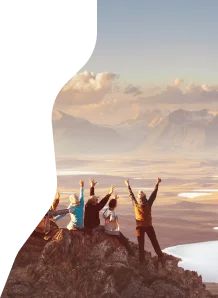Everything You Need To Know About Aruba

The island of Aruba has an abundance of idyllic beaches and a storied history, making it one of the most culturally diverse countries in the Caribbean.
With eight resorts on the island’s idyllic western coast, Virgin Holidays has plenty of options for your Aruban adventure.
Aruba has been inhabited for over a millennia
The little island in the Caribbean Sea is around 21mi (33km) long and 6mi (9km) wide, and was first colonized around the year 1000 by people from modern-day Venezuela. The Caiquetio Indians were eventually replaced by Spanish conquistadors, who were succeeded in the 17th century by Dutch settlers. That’s why most Arubans speak Dutch along with Papiamento creole.
The island is a constituent country of the Netherlands
Aruba is one of four countries, along with the Netherlands, Curaçao and Sint Maarten, that make up the Dutch Kingdom. Following a long campaign from Aruban politician Gilberto ‘Betico’ Croes throughout the 1970s, the island became autonomous in 1986. However, its citizens remain Dutch nationals.

It’s one of the Caribbean’s most diverse countries
Aruba has an ethnic diversity that belies its small population. There are more than 90 different nationalities between 100,000 people, including Haitian, Dominican and Colombian, which has shaped Aruba’s culture and cuisine. There are no major cities, rather six districts: Noord, Oranjestad, Paradera, San Nicolas, Santa Cruz and Savaneta, with most people living in either Oranjestad or San Nicolas.

The national flag captures the island’s story
Croes’s campaign also gave Aruba its national flag and official anthem ‘Aruba Dushi Tera,’ or ‘Aruba Sweet Land,’ something that Arubans celebrate each year on March 18. The flag’s blue background represents the sea and the red star represents the four points of the compass, symbolizing the nationalities that have called the island home, while the yellow stripes denote Aruba’s autonomy within the Kingdom of the Netherlands.

The landscapes are incredibly diverse
For such a small island there’s a huge variety of ecosystems to be explored, including wildlife-rich marshlands, volcanic coastlines and sprawling sand dunes scattered with cactus and aloe (the latter, popular in beauty products, is one of the island’s largest exports).

Almost one-fifth of Aruba is national park
Arikok National Park occupies around 8,000 acres (3,237ha) of protected wilderness, including naturally occurring pools, or conchis, along the east coast where you can swim protected from the waves. Further north, the Ayo Rock Formations offer panoramic views of the island. The Casibari Boulders, in particular, were considered sacred to the Caiquetio Indians, whose rock drawings still remain, as vivid as the day they were painted millennia ago.

San Nicolas is the island’s cultural capital
Aruba’s most southerly district, nicknamed the Sunrise Side, is the island’s unofficial capital of culture. The streets are covered with stunning murals from a mix of local and international street artists, including Germany’s Bond Truluv, Brazil’s Eduardo Kobra and Curaçao’s Francis Sling. Each year the island welcomes an international community of artists for the Aruba Art Fair.

Aruba’s cuisine has a global influence
There are hundreds of restaurants across Aruba with every ethnic cuisine imaginable, from Brazilian and Peruvian to Japanese and Mediterranean. Traditional Aruban dishes include pan bati (cornflour flatbread), carni stoba (beef stew) and keshi yena (stuffed cheese) and, like most Caribbean islands, the seafood is amazing, with Aruban fish dishes best enjoyed with an ocean view on Palm Beach and Oranjestad.

It’s beaches are among the world’s best
Of course, any visit to the Caribbean is not complete without a trip to the beach. Aruba boasts a number of beautiful white sandy beaches, including Andicuri, Arashi, Eagle and Palm. There are more secluded options within Arikok National Park.

Visit Aruba with a Virgin Holidays package and experience everything this gorgeous Caribbean island has to offer.

KEEN TO EXPLORE THE WORLD?
Connect with like-minded people on our premium trips curated by local insiders and with care for the world
Since you are here, we would like to share our vision for the future of travel - and the direction Culture Trip is moving in.
Culture Trip launched in 2011 with a simple yet passionate mission: to inspire people to go beyond their boundaries and experience what makes a place, its people and its culture special and meaningful — and this is still in our DNA today. We are proud that, for more than a decade, millions like you have trusted our award-winning recommendations by people who deeply understand what makes certain places and communities so special.
Increasingly we believe the world needs more meaningful, real-life connections between curious travellers keen to explore the world in a more responsible way. That is why we have intensively curated a collection of premium small-group trips as an invitation to meet and connect with new, like-minded people for once-in-a-lifetime experiences in three categories: Culture Trips, Rail Trips and Private Trips. Our Trips are suitable for both solo travelers, couples and friends who want to explore the world together.
Culture Trips are deeply immersive 5 to 16 days itineraries, that combine authentic local experiences, exciting activities and 4-5* accommodation to look forward to at the end of each day. Our Rail Trips are our most planet-friendly itineraries that invite you to take the scenic route, relax whilst getting under the skin of a destination. Our Private Trips are fully tailored itineraries, curated by our Travel Experts specifically for you, your friends or your family.
We know that many of you worry about the environmental impact of travel and are looking for ways of expanding horizons in ways that do minimal harm - and may even bring benefits. We are committed to go as far as possible in curating our trips with care for the planet. That is why all of our trips are flightless in destination, fully carbon offset - and we have ambitious plans to be net zero in the very near future.













